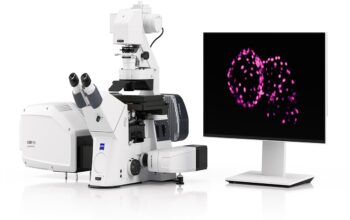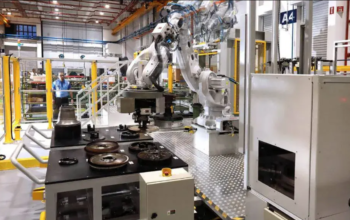How it all started
The ongoing development of optical measuring instruments at the end of the 19th century played a key role in the increasing international success of ZEISS. In 1890 Carl Pulfrich, the inventor of stereo photogrammetry, came to Jena.
In order to advance the development of optical systems for chemical analysis, he founded the Optical Measuring Instruments division, becoming its head two years later.
After World War II and the partition of Germany, ZEISS was split up as well.
In addition to the traditional site in Jena, there was now a new firm in Oberkochen. It was not until 1952 that the Optical Measuring Instruments division was able to offer the entire pre-war product line again. Initially, the range of optical metrology instruments was offered both in Jena and Oberkochen. In 1994, after reunification of the two companies, large parts of the Optical Metrology division were sold. The remaining department specialized primarily in process analytics.
Innovations
Chemical analytical technology boasts over 140 years of innovation and development history at ZEISS. With the first Abbe refractometer in 1874 and the Pulfrich refractor in 1895, ZEISS laid the foundation for materials analysis. Over the course of the years, ZEISS has sharpened its focus on the field of spectroscopy, in which radiation is dispersed according to its energy.
Examples of important innovations along the way are SPEKOL and the LMA 1® laser micro-spectral analyzer in the 1960s.
Since 1985, ZEISS has revolutionized the field of spectrometry from ultraviolet light to the near-infrared range with its diode array spectrometers of the MMS, MCS, and PGS families.
ZEISS History
Technological Milestones of
ZEISS Spectroscopy
- 1899 – 1945
- 1946 – 1989
- 1990 – 2003
- 2004 – today
About ZEISS
ZEISS is an internationally leading technology enterprise operating in the optics and optoelectronics industries. In the past fiscal year, the ZEISS Group generated annual revenue totaling 6.3 billion euros in the four segments Semiconductor Manufacturing Technology, Industrial Quality & Research, Medical Technology, and Consumer Markets, and invested 13 percent of its revenue in research and development (as of 30 September 2020). ZEISS has a long tradition of similarly high expenditures for research and development, which also represent an investment in the future.
For its customers, ZEISS develops, produces and distributes highly innovative solutions for industrial metrology and quality assurance, microscopy solutions for the life sciences and materials research, and medical technology solutions for diagnostics and treatment in ophthalmology and microsurgery. The name ZEISS is also synonymous with the world’s leading lithography optics, which are used by the chip industry to manufacture semiconductor components. There is global demand for trendsetting ZEISS brand products such as eyeglass lenses, camera lenses and binoculars.
With a portfolio aligned with future growth areas like digitalization, healthcare and Smart Production and a strong brand, ZEISS is shaping the future of technology and constantly advancing the world of optics and related fields with its solutions. The company’s significant, sustainable investments in research and development lay the foundation for the success and continued expansion of ZEISS’ technology and market leadership.
Over 32,000 employees in almost 50 countries work at around 30 production sites, 60 sales and service locations and 27 research and development facilities. The company is headquartered in Oberkochen, Germany. The Carl Zeiss Foundation, one of the largest foundations in Germany committed to the promotion of science, is the sole owner of the holding company, Carl Zeiss AG.









